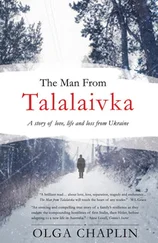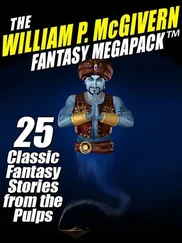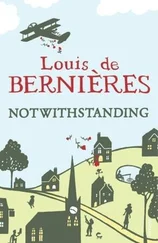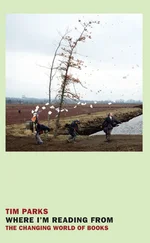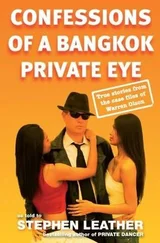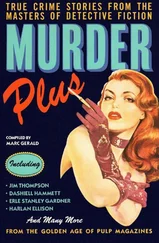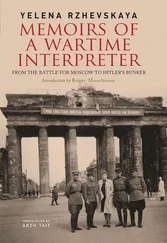With the inauguration as president of Viktor Yuschenko in 2005 after the Orange Revolution of the year before, the position of the Holodomor in Ukrainian life and politics changed significantly. Yuschenko took a far more explicitly nationalistic stance on history than his predecessors had done, and the Holodomor memorial is one of the products of his otherwise disastrous time as president. It was his quarreling with Yulia Tymoshenko, the other hero of the Orange Revolution and his prime minister, which opened the door for the return to office of Viktor Yanukovych, who, thanks to the revolution, had failed in his bid to cheat his way to winning and holding the presidency.
With the return of Yanukovych, first as prime minister in 2007 and then as president in 2010, the Holodomor began to fall back again in terms of public remembrance. Because of this political shift and because this was a taboo topic in Soviet times, the Holodomor has not entered into the DNA or soul of Ukrainian politics, or worldview, as the Holocaust and the Armenian genocide have in Israel and Armenia. Besides, there is another element here which is different from the other two genocides. The Holocaust was an act committed by the Nazis and their collaborators against the Jews and, more randomly, Roma. Likewise, in 1915 Armenians were killed by the Ottoman Turks or Kurds led by them. The point is that it was something done by others against us. In Ukraine, as indeed in Cambodia during the Khmer Rouge genocide of 1975–79, it was not something quite so clearly done by others. The lack of a major memorial in Kiev until 2008 can thus stand in stark contrast to what happened in Armenia. As communists had no role in the genocide, they could sponsor the building of its 44-meter black stele and memorial, which opened in 1967. In Ukraine, however, communists were the perpetrators and many of them were Ukrainians. Among the security men who prevented peasants leaving their starving villages could have been people to whom those about to die were actually related. There is another element which acts as a break, to a certain extent at least, in discussing the Holodomor. That is the issue of cannibalism, which some of those crazed with hunger resorted to. It is not exactly a forbidden topic, but it is one that any Ukrainian would understandably feel uncomfortable discussing.
At the memorial schoolchildren are led underground to see the exhibits. You can look at books incorporating death registers in which, incredibly, many but not by any means all who died had their ends recorded by Soviet bureaucrats. The victims’ ethnic nationalities were also noted and you can see that it was not just Ukrainians who died, but Russians, Germans, Bulgarians, Jews and so on. At the center of the circular underground memorial chamber is a glass and black stone shrine holding grain, representing, says Oleksandra Monetova, the young guide who showed me around, the souls of those who died. She dipped her hand in the grain and then let it slip through her fingers. I told her I thought it was odd that this monument is next to the Soviet memorials, since those who died in the famine were victims of Stalin and communism. She told me that many people from the west of Ukraine, where there was no famine because it was then part of Poland, say that this is indeed a contradiction. Then she added, like a person who had reflected on this and had no nationalist agenda to pursue or persuade me of, “To us from the east and the center it is not. My great-grandfather fought in the war and people in my family also suffered in the famine… People did not join the Soviet army because they loved the Soviet Union, but because they had to.”

Oleksandra Monetova, guide at the Holodomor memorial, Kiev. The grain she is holding represents the souls of those who died. October 2013.
One of the greatest Soviet writers was Vasily Grossman. He was born in 1905 in Berdychiv, then one of the main centers of Jewish life in Ukraine, and died in Moscow in 1964. Grossman is rightly best known for Life and Fate , his extraordinary novel of Stalingrad. Far less well known is Everything Flows , a book on which he was still working when he died. Because it was never finished it is a patchy affair, but his chapter on collectivization and the famine is simply unparalleled, and worth recording here for its power to explain something about the period, the Holodomor and its legacy.
Based on what Grossman knew, his character Anna Sergeyevna recounts her experience in a Ukrainian village where she was working as a bookkeeper in the kolkhoz , or collective farm. First, she explained, had come the period of “dekulakization” when the richer peasants, known as kulaks , were dispossessed, arrested and deported. Quotas of the numbers to be arrested were drawn up and names selected by the village soviet, whose members could be bribed, and because there were “scores to be settled because of a woman, or because of some other past grievance… Often it was the poorest peasants who were listed as kulaks, while the richer peasants managed to buy themselves off.” Worse, however, but relevant today in an era where the power of propaganda is as strong as ever, is the description of what happened to people as the campaign took hold. “The activists were just villagers like anyone else, they were people everyone knew, but they all seemed to lose their minds. They seemed dazed, crazed, as if they had fallen under a spell.” People convinced themselves, she says, that kulaks were evil and should be shunned. As they ceased to be equal human beings, it was but a short step to seeing them dead, which was of course the aim of Soviet propaganda then and Russian wartime propaganda now by which Ukrainians are dehumanized as “fascists.”
The anti- kulak campaign Anna recounts was at its height in February and March of 1930 as thousands were packed on trains and sent eastward, but it often left chaos in its wake. The amount of land cultivated fell, as did production, but “everyone kept reporting that, without the kulaks, our village life had immediately started to blossom.” Lies about how much was being produced went up the chain of command because “everyone wanted Stalin to rejoice in the belief that a happy life had begun…” Orders came back down that the village was to produce a grain quota “it couldn’t have fulfilled in ten years,” and if the village could not produce the grain then people were “idlers, parasites, kulaks who had not yet been liquidated! The kulaks had been deported, but their spirit endured.” The deportation of the kulaks , some 300,000 by the end of the campaign in Ukraine, out of 1.7 million deported in the entire Soviet Union, was obviously not the only cause of the fall in production, but whatever the reasons “the authorities searched for that grain as if they were searching for bombs and machine guns. They stabbed the earth with bayonets and ramrods; they smashed floors and dug underneath them; they dug up vegetable gardens.” Later Anna asks: “Who confiscated the grain?” and answers her own question. It was overwhelmingly locals, not people sent from Moscow. It was local communist officials, local policemen and men from the secret police and occasionally soldiers.
By winter the village was starving but people were not dying yet. Party officials said that villagers should not “have lazed about.” People were desperate. There was no help from the state or party and the grain was being exported for cash, which was being used for industrialization. The descriptions of the full-blown famine that now set in are harrowing. Grossman’s Anna explains how people, who were prevented from going to the railway station, would beg by the track of the Kiev–Odessa express hoping that someone would throw them a scrap of bread. This was something Grossman witnessed himself. Meanwhile, some managed to escape to towns where, with no permission to be there or coupons for bread, they died on the streets. Anna recounts in horrific detail how villagers lay in their homes barely breathing, incapable of moving. “The whole village died. First it was the children, then it was old people, then it was the middle-aged.” At first graves were dug for the dead, but then they were just left where they had died. Eventually those who worked for the local administration were taken to the nearby town.
Читать дальше


